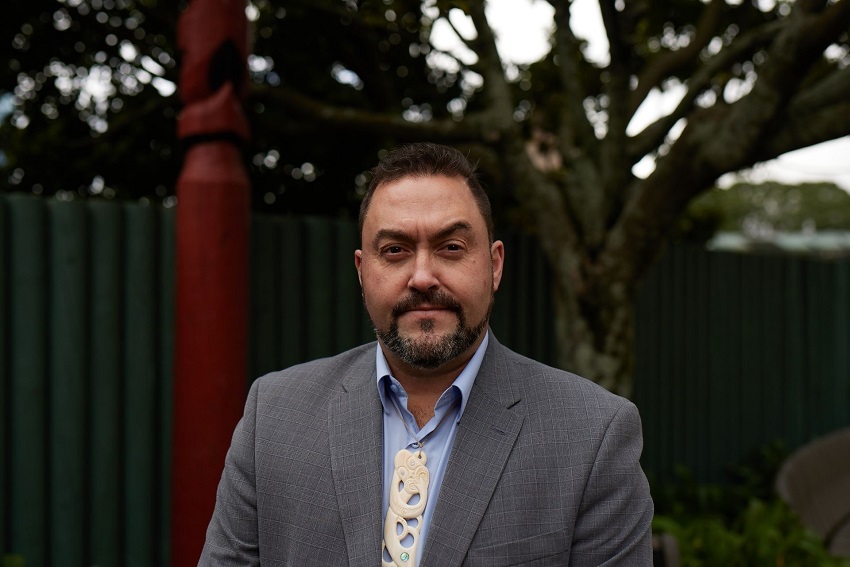Can summer tame the flames of burnout?

Burnt-out risk in NZ workforce: Bad and getting worse
One in nine. One in six. One in five. One in three.
This isn’t a tally of growing COVID numbers – but these stats are potentially just as worrying.
New AUT research shows that, as another pandemic year comes to an end, the risk of being burnt out at work is soaring.

AUT’s Wellbeing@Work study, led by AUT Business School Professor Jarrod Haar (Ngāti Maniapoto, Ngāti Mahuta), has been tracking the New Zealand workforce since February 2020.
The latest data reports on all four iterations of the study (May 2020, December 2020, April 2021, and November 2021). It also includes a previous study, from February 2020, that surveyed managers only.
Overall, the analysis paints a woeful – and worsening – picture of the health of the NZ workforce.
The surveys all involved roughly 1000 participants across a diverse range of levels, roles and - except February 2020, when the cohort comprised 840 managers. Most respondents (roughly 75%) were from the private sector; they were evenly split by gender (50/50), and they represented an age span of 20-70 years, with the average age of around 39 years.
To have a high burnt-out risk, respondents needed to score high in all four dimensions:
- Exhaustion: both physically and mentally. Note: while a core factor, being ‘extremely exhausted does not equal burnout!
- Mental distance: employees no longer consider what they do has any value or worth.
- Emotional impairment: being unable to control your emotions, such as showing up to work and crying.
- Cognitive impairment: beingdistracted and forgetful at work.
Across the five time periods, the data shows the following:
Proportion of sample | ||
Survey Dates | with High Burnt-Out Risk | Sample Size |
February 2020 | 11.3% | 840 managers only |
May 2020 | 11.1% | 1022 employees + managers |
December 2020 | 18.0% | 1042 employees + managers |
April 2021 | 20.7% | 1043 employees + managers |
November 2021 | 35.2% | 1080 employees + managers |
These numbers can be further translated to show how high the risk of being burnt out is for specific groups of employees (November cohort). Presented highest to lowest:
- Those who feel the most tied (or "tethered") to their office (via smart devices) had a 652.3% higher burnt-out risk
- Māori employees had a 593.9% higher burnt-out risk
- Workers with high work demands (e.g., too much work to do) had a 572.4% higher burnt-out risk
- Workers in highly bureaucratic firms had a 405.7% higher burnt-out risk
- Those with dependents had a 257.5% higher burnt-out risk
- Managers had a 235.5% higher burnt-out risk
- Males had a 222.6% higher burnt-out risk
- Those working-from-home (WFH) had a 197.1% higher burnt-out risk
- Full-time workers had a 147.3% higher burnt-out risk
- No difference by sector (private v. public v. not-for-profit).
- No difference for younger employees (under 30yrs)
As the findings show, there are two key drivers of employee burnout: working after hours via smart devices (being “highly tethered”), and juggling high work demands. Those who fit these categories are two thirds likely to be in the high burnt-out risk category.
Clearly, something has changed – and something needs to be done.
Professor Haar notes the latest cohort to report has been through an extended lockdown affecting much of the country. Indeed, 57% of respondents were WFH at least one day a week. Many of those face the juggle of trying to be caregiver, teacher, and employee at the same time.
Professor Haar also notes the burnt-out risk danger for managers aligns with international commentary on manager burnout.
“In the past two years, managers have been the glue holding workplaces and workforces together. People in these positions have likely been under tremendous pressure and serious damage is being done. They are more likely to have high work demands and use smart devices after-hours. We’re seeing the impact of that continued strain.”
He says the findings are especially worrisome for Māori.
“Māori were overrepresented in this study at 23.9% of the sample. They were well represented in management positions, but much were more likely to be male and have dependents, and they were slightly more likely to report higher work demands and face higher levels of bureaucracy in their workplace – a perfect storm of burn out.”
So, what’s the remedy?
Professor Haar encourages organisations to be as supportive as possible of their employees taking a decent and much-deserved summer break.
“Workers are genuinely tired. Organisations may want to go the extra distance and see if they can do a bit more to acknowledge their employees’ dedication and fatigue. Here at AUT, for example, we are closing three days earlier than planned to give workers a head-start on their rest and recovery. That will go a long way to ensuring people feel ready and able to return in 2022,” says Professor Haar.
Finally, he says, don’t beat yourself up.
“It has been a tough year for everyone. Focus on what matters – rest and restoration away from work.”
Useful Links:
- Read profile of Jarrod Haar
- Study Business at AUT